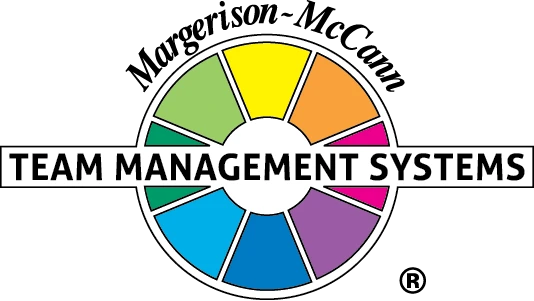High Energy Teams
High-Energy Teams occur when eight fundamental strategic issues are addressed:
Who are we?
Where are we now?
Where are we going?
How will we get there?
What is expected of us?
What support do we need?
How effective are we?
What recognition do we get?
To create a High-Energy Team, team members need to establish ways of addressing the issues associated with these questions. Each question must be subject to continuous discussion and review through regular team learning processes. In Team Management Systems we have developed the High-Energy Teams Model (HETM) as the basis for these processes.
Who are we?
Each person brings different strengths to a team and will approach problems and opportunities in a different way. Team members need to know 'what makes each person tick' so that individual differences can be harnessed to achieve maximum performance levels. The workplace behavior of team members can be understood by examining their Work Values, Risk-Orientation and Preferences.
Where are we now?
Before planning where you are heading as a team, it is useful to look at team balance, whether team members are likely to be risk averse or risk accepting, and whether conflicting values are likely to arise. A Situational Analysis will allow you to look at the teams' key Strengths, Weaknesses, Opportunities and Threats and to determine whether the necessary resources are available to achieve the team's vision.
Where are we going?
To work with energy, commitment and enthusiasm, a team needs to know where it is going. It has to have a vision that is aligned with the organization's mission and goals. It needs to understand its purpose - what makes it different from other teams, what its outputs are and what outcomes they lead to. A Team Purpose Statement can be used as a structure for the team to determine its specific purpose and how that aligns with the organizational vision.
How will we get there?
To turn a vision into reality, it is necessary to systematically set objectives, action-plans and measures of performance. It is important to plan the route from where you are now to where you want to be through looking at the critical Types of Work.
What is expected of us?
People find it difficult to perform if they don't know what they are meant to be doing. In a High-Energy Team, all team members will fully understand their job description, their role in the team, what they are responsible for and, most importantly, what they are accountable for. The development of behavioral ground rules aligned with agreed shared team values is also important to ensure team survival.
What support do we need?
Once the team finds answers to the first five questions, it can then focus on what support is required to deliver results. This means doing a training and development needs assessment and establishing ongoing systems of team learning so that all team members can continuously develop their skills.
How effective are we?
A High-Energy Team is one that regularly reviews its effectiveness and continually improves its performance. Benchmarks for success can be established and procedures for learning from mistakes implemented. A regular process of 'Questioning' helps prevent complacency from developing.
What recognition do we get?
In general, most teams will not attain high-energy levels unless there is adequate recognition for the accomplishments of all team members. This can be achieved through feedback, remuneration, fringe benefits and promotion.
Linking Skills
The processes that ensure all eight questions are integrated and coordinated are known as 'linking'. Team members and particularly the team leader need to be effective at a whole range of Linking Skills.
When all these strategic issues have been addressed to the satisfaction of the team, the team will be in a 'high energy' state ready to work optimally to deliver excellent performance.
The Team Signals Questionnaire allows team members to record the importance of these issues to the team and how satisfied they are with the extent that these issues have been addressed.

